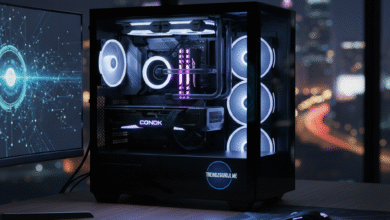Unlocking Success: How a SAT Diagnostic Test Can Elevate Your Preparation

Preparing for the SAT is often viewed as a daunting process by high school students. It represents a critical step toward their academic future, determining their readiness for college and, in many cases, influencing scholarship opportunities. To meet the challenge of this significant test head-on, one crucial tool stands out in modern test prep—the SAT diagnostic test.
What is a SAT Diagnostic Test?
The SAT diagnostic test is an essential starting point for students looking to understand where they currently stand. It’s not just another practice test; it’s a carefully curated assessment that highlights your strengths and pinpoints the areas where improvement is necessary. By identifying gaps in knowledge early in your preparation journey, a diagnostic test ensures that your study time is spent efficiently and effectively. But why should students consider this test as their first step, and how does it differ from a regular SAT practice exam?
A Customized Study Roadmap
One of the most valuable aspects of a SAT diagnostic test is the detailed analysis it provides. Unlike traditional practice tests that may offer little more than a score at the end, diagnostic tests break down your performance by subject and skill level. For example, after completing a diagnostic test, you might discover that while your math skills are strong, your understanding of grammar or reading comprehension may need improvement. By addressing these specific weaknesses early, students can focus their efforts where it counts most.
Moreover, platforms that offer diagnostic tests, such as LearnQ.ai, use artificial intelligence to offer personalized analytics. This means that not only do students receive a breakdown of their performance, but they also get tailored recommendations on how to improve. This individualized approach is much more effective than one-size-fits-all study plans and can lead to substantial improvements over time.
Efficiency in Preparation
Time is often the enemy of students preparing for the SAT. With school, extracurricular activities, and personal obligations, finding hours for test prep can feel overwhelming. The SAT diagnostic test is designed to help students make the most of their limited time by focusing their efforts on the areas that will yield the greatest improvement.
For example, instead of spending equal time on math and reading, a diagnostic test might reveal that a student’s math skills are already advanced, allowing them to dedicate more time to reading and writing. This streamlined approach to studying can lead to faster, more meaningful progress, ensuring that students feel confident on test day.
Reducing Test Anxiety
Another major benefit of taking a SAT diagnostic test early in your preparation is its potential to reduce test anxiety. Many students feel nervous about the SAT because they don’t know what to expect. By taking a diagnostic test, students get a real taste of what the SAT will be like, including the types of questions they’ll encounter, the time constraints they’ll face, and the pressure of performing under exam conditions.
Knowing what to expect can significantly reduce test-day jitters. In fact, students who take a SAT achievement test (another term for an assessment designed to gauge knowledge in specific areas) report feeling more confident when they eventually sit for the actual SAT. Confidence can make a world of difference, helping students remain calm and focused, which often leads to better results.
SAT Diagnostic Test vs. Practice Test
It’s important to understand that while a SAT diagnostic test and a practice test both serve a role in preparation, they are not the same. A diagnostic test is an early-stage assessment, best taken at the start of your SAT journey. It is designed to uncover gaps in knowledge, helping students target their weakest areas. A practice test, on the other hand, is generally taken later in the preparation process, after a student has worked on improving their skills.
Think of a diagnostic test as the roadmap that tells you where to go, while practice tests are the vehicles that take you on the journey. By using both, students can ensure that they’re not only moving forward but also headed in the right direction.
The Role of Technology in Diagnostic Testing
In today’s world, the integration of technology in education is making a significant difference, especially in the realm of SAT prep. Platforms like LearnQ.ai offer AI-powered diagnostic tests that adapt to each student’s individual needs. These tests are not static; they adjust the difficulty and types of questions based on a student’s responses, offering a more accurate representation of their abilities.
This adaptive learning model ensures that students are constantly challenged without being overwhelmed. The feedback provided by these platforms includes actionable insights that students can implement immediately in their study routines. Additionally, many AI-driven platforms offer interactive features, such as the ability to ask questions to a virtual tutor, which can further enhance the learning experience.
Making the Most of Your Diagnostic Test Results
Once you’ve completed a SAT diagnostic test, it’s crucial to make the most of the results. Here are a few tips on how to proceed:
- Create a Study Plan: Use the insights from your diagnostic test to create a focused study plan. Prioritize the areas where you scored the lowest, but also continue practicing your strengths to maintain balance.
- Practice Regularly: After identifying your weak spots, be sure to practice those subjects consistently. Consistency is key to improvement, and the more you practice, the more comfortable you’ll become with the material.
- Monitor Your Progress: Take additional practice tests as you go along to monitor your improvement. This will allow you to see how much progress you’ve made and adjust your study plan if necessary.
- Utilize Personalized Feedback: If your diagnostic test provides personalized feedback, use it! This feedback is a goldmine for targeted study sessions and can prevent you from wasting time on areas that don’t need as much attention.
The Road to SAT Success
The SAT diagnostic test is not just another hoop to jump through in your preparation journey—it’s a crucial tool that can save you time, reduce your anxiety, and ensure that your studying is as effective as possible. With the help of technology and personalized learning platforms, students today have more tools at their disposal than ever before.
If you’re serious about achieving a top score, a SAT diagnostic test should be your first step. From there, use your results to guide your study plan, focusing on your weaknesses and sharpening your strengths. With hard work, smart preparation, and a clear understanding of your starting point, success on the SAT is well within your reach.
And remember, diagnostic testing isn’t just for the SAT. As you move forward in your academic career, other assessments, such as the SAT achievement test, can provide similar benefits for your ongoing development. By consistently using diagnostic tests to assess your progress, you can continually refine your study habits and achieve your goals—both in and out of the classroom.
In conclusion, if you’re aiming to conquer the SAT, taking a SAT diagnostic test is the most strategic way to start. It will not only give you a clearer picture of where you stand but also lay the foundation for targeted, effective study sessions. So, take the test, embrace the feedback, and set yourself on the path to SAT success.



